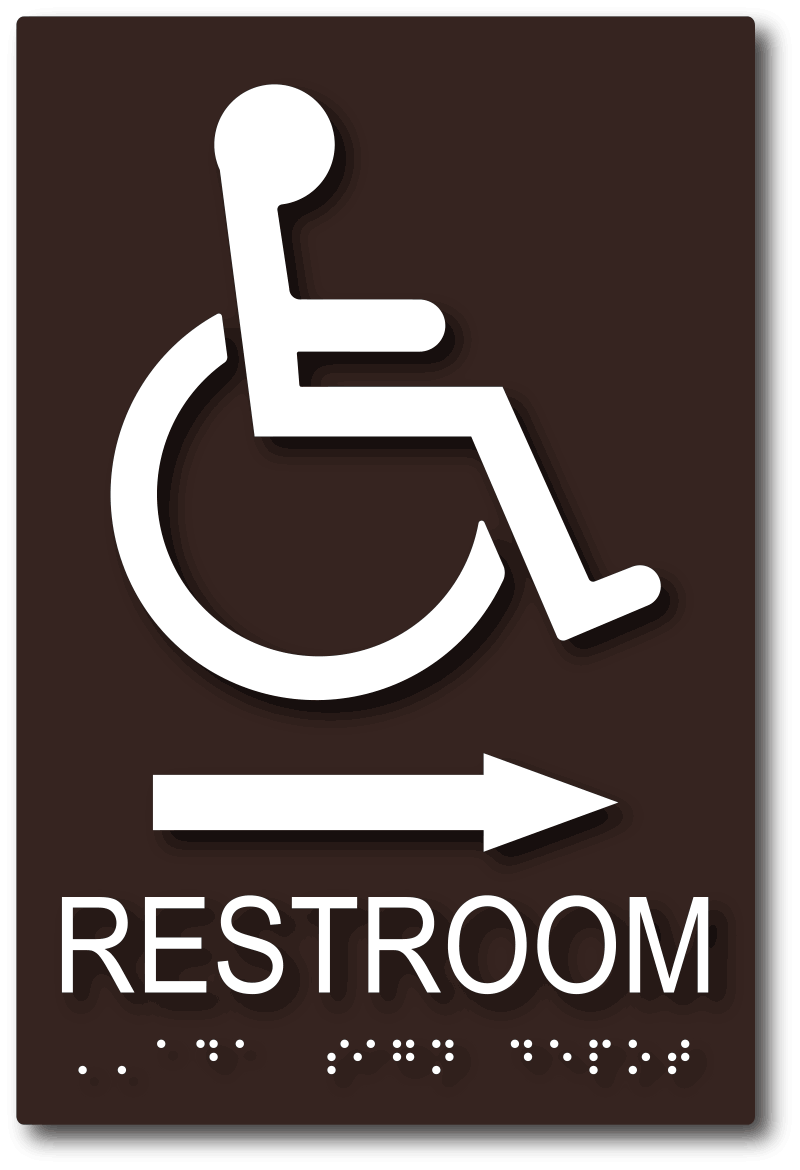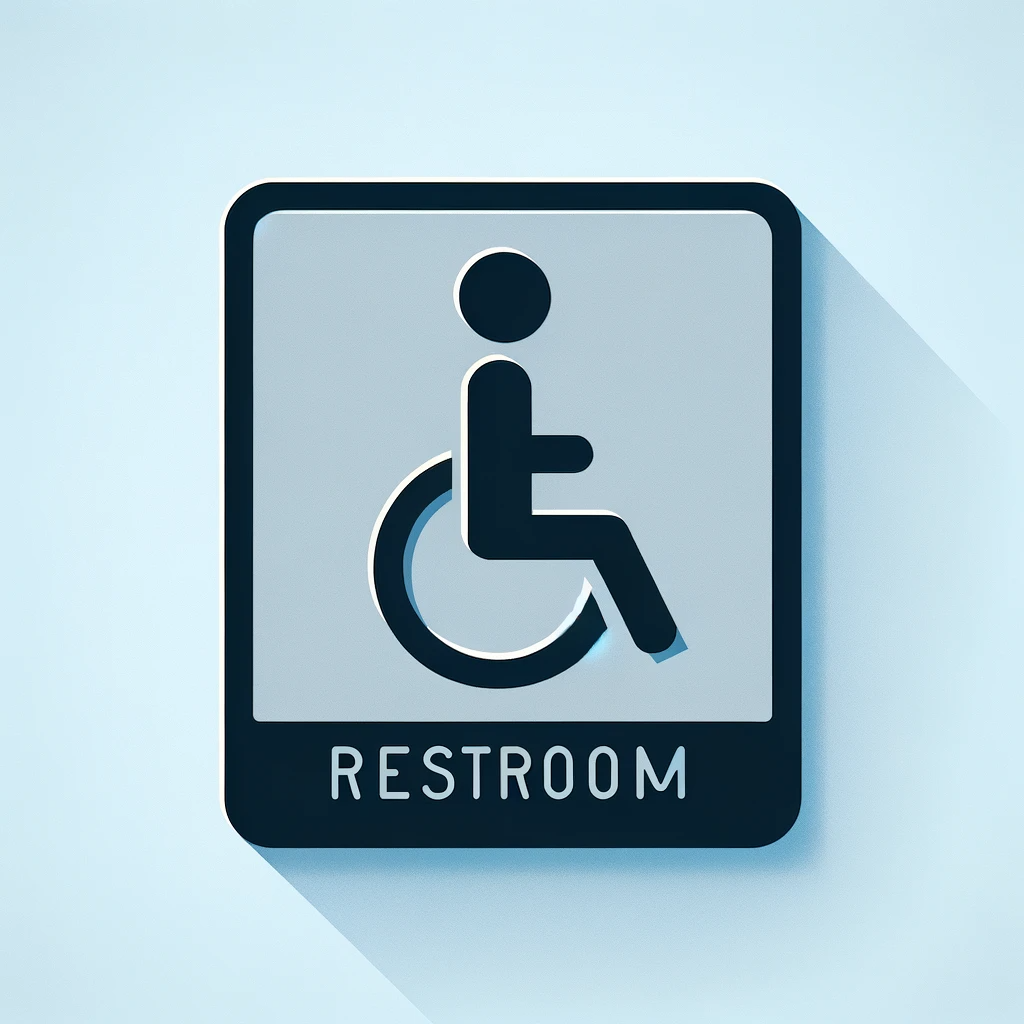Personalizing ADA Signs to Fulfill Your Particular Demands
Personalizing ADA Signs to Fulfill Your Particular Demands
Blog Article
Exploring the Key Features of ADA Signs for Boosted Access
In the realm of accessibility, ADA indicators serve as quiet yet effective allies, guaranteeing that rooms are navigable and comprehensive for individuals with disabilities. By integrating Braille and tactile elements, these indications break barriers for the aesthetically impaired, while high-contrast color systems and clear typefaces provide to diverse aesthetic demands.
Significance of ADA Conformity
Ensuring conformity with the Americans with Disabilities Act (ADA) is important for cultivating inclusivity and equal gain access to in public rooms and workplaces. The ADA, passed in 1990, mandates that all public centers, employers, and transportation services fit people with disabilities, ensuring they take pleasure in the very same civil liberties and opportunities as others. Conformity with ADA criteria not only fulfills legal responsibilities however additionally boosts a company's reputation by demonstrating its commitment to diversity and inclusivity.
One of the crucial facets of ADA conformity is the execution of accessible signage. ADA signs are developed to guarantee that individuals with impairments can quickly navigate with areas and buildings. These signs should stick to particular guidelines concerning size, font, shade comparison, and positioning to assure presence and readability for all. Effectively applied ADA signs aids get rid of obstacles that individuals with specials needs usually experience, thereby advertising their independence and self-confidence (ADA Signs).
Moreover, adhering to ADA laws can minimize the danger of possible fines and lawful consequences. Organizations that fail to adhere to ADA guidelines might encounter penalties or legal actions, which can be both economically burdensome and destructive to their public photo. Therefore, ADA conformity is essential to fostering a fair environment for everybody.
Braille and Tactile Components
The consolidation of Braille and tactile aspects right into ADA signage personifies the principles of availability and inclusivity. These features are critical for individuals that are blind or aesthetically impaired, enabling them to browse public rooms with greater freedom and confidence. Braille, a tactile writing system, is crucial in offering composed details in a format that can be quickly perceived via touch. It is normally positioned below the corresponding text on signs to ensure that individuals can access the info without aesthetic assistance.
Tactile elements extend beyond Braille and consist of elevated signs and characters. These components are designed to be noticeable by touch, permitting people to determine space numbers, bathrooms, departures, and other crucial areas. The ADA establishes details standards concerning the size, spacing, and positioning of these responsive aspects to optimize readability and ensure uniformity throughout different environments.

High-Contrast Color Pattern
High-contrast color pattern play a crucial function in enhancing the presence and readability of ADA signage for people with visual problems. These plans are important as they take full advantage of the difference in light reflectance in between message and background, ensuring that indications are easily noticeable, even from a distance. The Americans with Disabilities Act (ADA) mandates making use of certain shade contrasts to fit those with minimal vision, making it a vital aspect of conformity.
The efficacy of high-contrast colors depends on their ability to attract attention in different lights conditions, including poorly lit environments and locations with glow. Normally, dark text on a light background or light message on a dark history is employed to accomplish optimum contrast. Black text on a white or yellow history gives a stark visual distinction that assists in fast recognition and comprehension.

Legible Fonts and Text Size
When thinking about the style of ADA signs, the option of clear font styles and ideal message dimension can not be overemphasized. These elements are essential for making sure that indications are easily accessible to people with aesthetic problems. The Americans with Disabilities Act (ADA) mandates that typefaces must be sans-serif and not italic, oblique, script, highly decorative, or of unusual form. These demands assist guarantee that the text is quickly understandable from a distance and that the personalities are distinct to varied target markets.
According to ADA standards, the minimum message height should be 5/8 inch, and it must enhance proportionally with viewing range. Consistency in message size adds to a cohesive aesthetic experience, aiding individuals in navigating environments successfully.
Moreover, spacing between lines and letters is essential to readability. Sufficient spacing prevents characters from showing up crowded, improving readability. By sticking to these standards, designers can considerably boost ease of access, making certain that signage offers its intended function for all people, no matter their aesthetic capacities.
Reliable Placement Techniques
Strategic placement of ADA signage is important for taking full advantage of availability and making sure conformity with legal standards. ADA guidelines specify that indicators must be installed at a height between 48 to 60 inches from the ground to ensure they are within the line of sight for both find more standing and seated people.
In addition, indications must be positioned nearby to the lock side of doors to enable easy recognition before access. Consistency in indicator placement throughout a center enhances predictability, lowering confusion and boosting overall customer experience.

Conclusion
ADA signs play an important duty in advertising access by incorporating attributes that resolve the demands of people with specials needs. These components jointly promote an inclusive environment, underscoring the importance of ADA compliance in ensuring equivalent accessibility for all.
In the world of availability, ADA indications serve as quiet yet effective allies, making sure that areas are navigable and inclusive for individuals with impairments. The ADA, passed in 1990, mandates that site here all public centers, employers, and transport services fit individuals with impairments, ensuring they appreciate the very same legal rights and opportunities as others. ADA Signs. ADA indicators are made to make sure that individuals with handicaps can quickly navigate via structures and spaces. ADA standards state that indications should be placed at a height in between 48 to 60 inches from the ground to guarantee anonymous they are within the line of sight for both standing and seated people.ADA signs play an essential function in advertising availability by integrating functions that deal with the demands of individuals with handicaps
Report this page